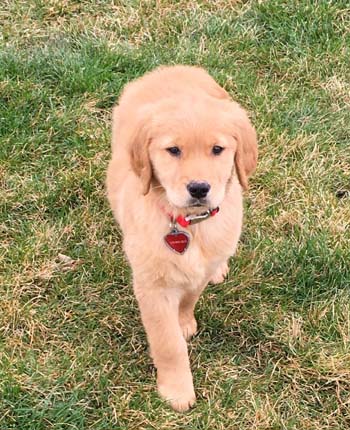Teaching Your Dog To Release From A Command
By Michael Albee
Teaching Your Dog To Release From a Command
“Also Known the OK or GO Command”
We really don’t consider teaching your dog to release from command as part of the basic obedience command set. However, the release command (or OK – GO command) is an essential part of any dog’s training. Without it your dog will never know when it can’t stop doing what you asked and move on. It is the way to tell your dog that it’s okay to get up and move around.
The release command is very easy to teach. In fact, if your dog is even remotely active, you should be able to capture the behavior and simply reward it.
Don’t worry, as long as you dog knows at least one common command, you can also teach it very easily.

GETTING STARTED
It works better in the beginning of this training if your dog is on a leash. The leash gives you better control over the dog’s movement. When working with puppies, or dogs with little or no training, this can be a real time saver.
Start the training by giving your dog the command to sit (or other if needed). After five to ten seconds, use a vocal command “Release”, “OK” to tell it that it’s fine to get up.
You may also want to add a hand motion in order to give a Visual Que. This will come in handy if you are at a distance and want to release your dog from a command.
Your vocal command should be in a happy or excited tone of voice when introducing this command. The tone of your voice will reinforce your dog’s belief that it is doing the right thing. When your dog comes out of the behavior, you can also give him a tactile reward or a treat.
Repeat this step until your dog is consistently releasing. Most dogs can pick this up in a very short time. It should only take a few days for your dog to become proficient at it.
TRAINER’S NOTES:
When your dog is consistently releasing on command, you can tone back on the excitement in your voice. A happy tone of voice will work fine.
In order to “proof” this behavior, extend and vary the wait time (up to one or more minutes) before giving the release command. This will assure that the dog isn’t guessing when you are going to release him.
REMINDER:
As with all training, keep your sessions short. Training sessions should be kept under 10 minutes in length. Finish each session with your dog correctly doing a behaivor.
Always do something that your dog likes to do when the session ends. Playing with the dog’s favorite toy or going for a walk will keep your dog interested in training. Because there is a “fun time” following the training, it will make the dog more willing to train well.
NEED HELP?
There are several variations of this training that will get the same results. If you need help teaching your dog this command you can contact us and we can give personal instruction. Contact Us.
